
By J. Sharon Batteate
The "c cr" (cream) dilution gene is responsible for Buckskin (golden body with black mane / tail), Palomino (golden body with white mane / tail), and Cremello (almost completely white with blue eyes). The amount of dilution depends on whether the horse carries one (single dose, heterozygous) or two (double dose, homozygous) copies of the gene. A sorrel / chestnut horse will become a palomino if he carries one "cream" dilution gene, a cremello if he carries two "cream" dilution genes. A bay horse will become a golden buckskin color if he carries one "cream" dilution gene, and a perlino if he carries two "cream" dilution genes. Since there is little effect on black pigment, this dilution can produce confusing results on black horses or darker sooty / smutty colors. A black horse carrying the "cream" dilution gene will show little effect. If he has any red areas, such on the muzzel or flanks, those areas will become golden colored, while the rest of the coat will stay black or sometimes be slightly diluted to a brownish color, which is called a Smoky Black. Sometimes this brownish color is mistaken for a dark liver chestnut. Two "cream" dilution genes on black is called Silver Smoky. There are pictures at the bottom of this article showing the effect of the "c cr" (cream) dilution on sooty / smutty colors.
This gene primarily affects red pigment (changing it to a gold color) and has very little, if any, effect on black pigment in a single dose, which is why the points on a buckskin stay black and are not diluted. If a buckskin horse has longer red guard hairs alongside the mane or at the top of the tail, these will be turned white, creating a "frosted" mane or tail. This is because there is a stronger effect on the mane and tail hairs, in which the red pigment is diluted to flaxen or white. This is what creates the white mane and tail on the palomino. Any extremely dark or black hair in the mane or tail will not be diluted, creating a "mixed" color mane or tail. Some of the Palomino registries even specify the amount of dark hair they will allow for registration purposes. This gene is also often associated with dappling.
Even though they give different names to the different double "c cr" dilutions (cremello, perlino, silver smoky), they all look the same - some shade of cream body with blue eyes. If the horse has white markings, such as a blaze or stocking, you can still usually see the white against the cream coat. Palomino and Buckskin foals are often born a lighter color than they will shed out to be, and mature horses will often become lighter in the winter - palominos will sometimes even resemble a cremello, but their eyes are brown or hazel instead of blue. Palominos and Buckskins can vary widely in shade. The lightest shade of palomino is a creamy color with brown or hazel-eyes, sometimes called "isabella" or "isabelo". The middle shade is called "golden" palomino. The darker shades can approach a liver color, sometimes called "chocolate palomino". Buckskins can also vary widely in shade. The lightest is a creamy color with black points sometimes called "buttermilk" buckskin. The middle shade is called "golden" buckskin, and the darker shades with dark hair mixed in the coat are often called "sooty" or "smutty" buckskin.

The palomino/ buckskin/ cream dilution gene is not associated with striping in the majority of horses from this dilution, and thus should not usually be accompanied by "primitive markings", as the "dun" dilution is.
However, there is a form of striping down the back besides the dun factor variety that is not commonly recognized, and is usually confused with it, that can appear with the "c cr" (cream) gene, which I call countershading striping, and is also known as sooty/smutty striping. It is not the same as the dun factor type, which is accompanied by leg barring and other primitive markings. Below left are pictures showing examples of this type of striping on two buckskin horses from the "c cr" dilution. This type of countershading striping is not accompanied by leg barring, and this type can appear on a buckskin horse from the c cr dilution (so occasionally you actually could have a buckskin with a stripe).
Sometimes a horse also happens to carry both a "c cr" (cream) dilution gene and a "dun" dilution gene (with the associated dun factor markings), as seen in the picture below on the right. These two different dilution genes interact to produce the lighter shades of dun, claybank, and palominos with dorsal stripes. Horses carrying both genes will have a stripe down the back and leg barring received from their dun parent, and will also have characteristics associated with the "cream" dilution, such as a white, or mixed color mane and tail. In these horses the action of the "c cr" gene will sometimes dilute the dun factor leg barring and dorsal stripe so it appears paler, or sometimes becomes just a shadow down the back, which then more resembles a countershading stripe. They are registered as one of the dun colors with AQHA. For example, a palomino with dun factor markings (commonly called a dunalino or linebacked palomino) is registered as a "red dun", because the AQHA's official handbook says "palominos do not have dorsal stripes", but for red dun they say "body color yellowish or flesh colored, mane and tail are red or reddish, flaxen, white or mixed; has red or reddish dorsal stripe...". Just because he is registered as a red dun does not change the fact he is also genetically a palomino. At this time they just don't have a practical way to register horses with multiple color factors. They have to be classed somewhere, and AQHA elected to class them with the duns. Generally, the various buckskin and palomino registries will not register a palomino with a dorsal stripe. However, they often vary somewhat in definition of a color, and in what each registry will consider as an acceptable color. Rules regarding color are subject to revision as we acquire more updated information on color genetics. Thus, you should consult with the other color registries individually as to their position on specific colors or for questions about specific horses. What may not be acceptable in one registry may be acceptable in another.
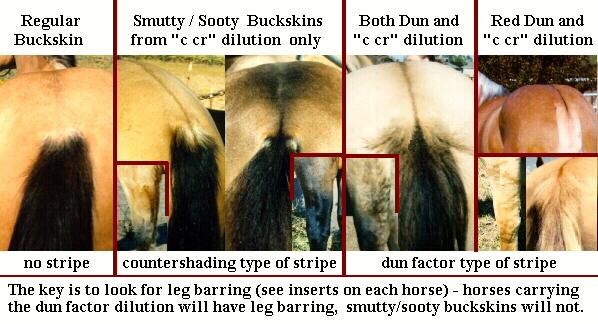
Believed to correspond to the "C" locus dilutions in other animals, the "c cr" dilution would act to reduce the amount of pigment by a reduction in the number, size, shape, and distribution of pigment granules in the hair, probably by a chemical process that interferes with the activity of tyrosinase necessary for pigmentation. In other animals the various "C" locus dilutions are recessive. In horses, the "cream" dilution is an incompletely dominant gene, which means the amount of dilution depends on whether the horse carries one (single dose, heterozygous) or two (double dose, homozygous) copies of the gene.

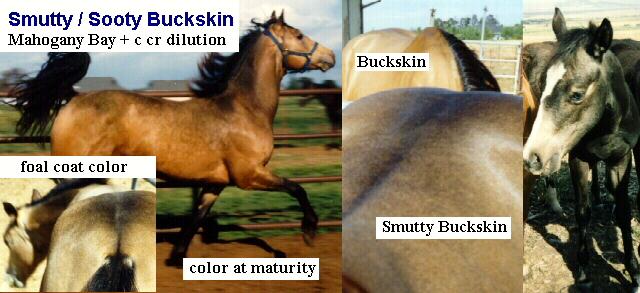
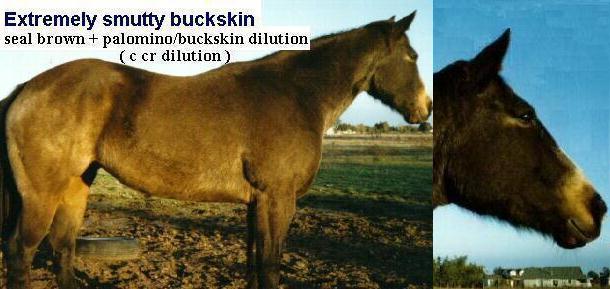
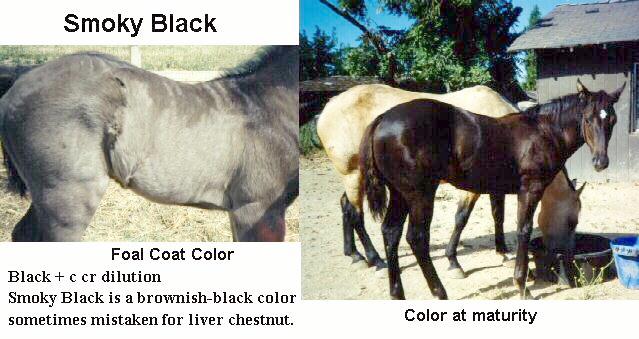
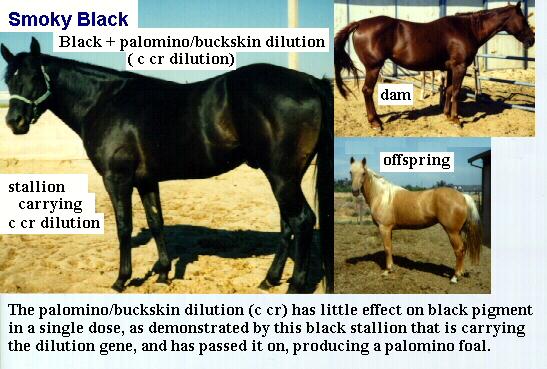
Use browser back button to return to article -or- Yipes! Stripes! index